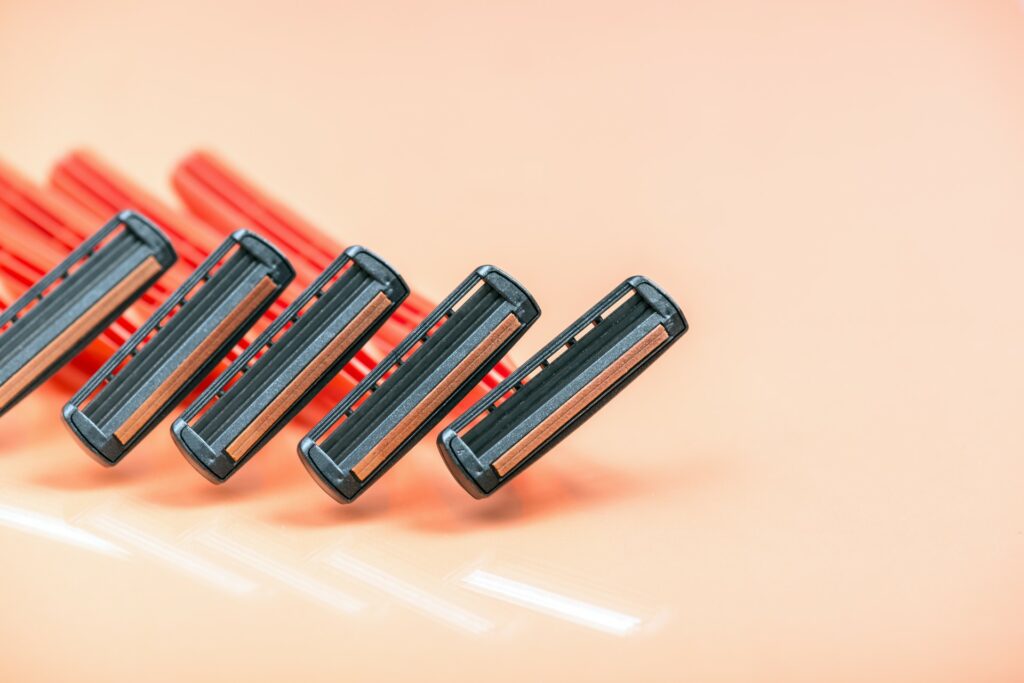Shaving and Skincare in 2023

Almost all adults shave some part of their bodies regularly. Additionally, most people deal with some razor bumps when they shave. Razors, creams, lotions, and cooling aftershaves still leave many people dealing with the aftermath of necessary shaving routines. Most people do not consider razor bumps something a dermatologist would handle, but it is a standard service offered by reputable dermatology offices.
Most razor bumps go away on their own, but some suffer from razor bumps that can be itchy and uncomfortable and become ingrown hairs. Educating clients about razor bumps is the first step to treatment because painful ingrown hairs can become infected and make people dread one of the most common tasks that are considered good hygiene.
Razor Bumps
There are a lucky few who shave and have little to no reaction from shaving. Their skin and the products they use make it seem effortless. Others experience what are like small pimples following a shave, and ingrown hair can become filled with puss. Untreated razor bumps at this stage can get infected easily if not treated.
What Causes Razor Bumps?
Although called razor bumps, these small pimple-like bumps can also result from shaving, waxing, and threading. Since the hair follicle goes out from the skin when forced another way, that creates irritation. Shaving too close to the skin can trap the hair follicle underneath the skin, and trapped hair grows downward or sideways into the skin.
Razor bumps and ingrown hairs can occur anywhere you remove hair, so the face, arms, legs, bikini, and under the arms are all areas that may experience uncomfortable bumps.
Helpful Tip: When scheduling and planning for professional hair removal services, do not have them performed too close to an event or vacation. Nothing is worse than having painful razor bumps or rashes for a dream vacation or big event. Give your skin some time to heal after any hair removal process because severe reactions can’t be covered up easily!
Two Types of Razor Bumps
Most people are unaware that there are two types of razor bumps that one might experience after hair removal. The first one is extrafollicular and most often results from shaving too close. The sharpness of the end of the hair bends back into the skin and begins to grow downward, which causes the skin to become inflamed. The other type is trans follicular, and this is when hair does not go beyond the skin’s surface and begins to grow downward. This is most often a result of tweezing or pulling the skin, so it is tight to shave.
What Causes Ingrown Hairs?
In addition to being unwillingly redirected, ingrown hairs may result from clogged hair follicles. When a follicle is clogged, it disrupts the direction of hair growth. Clothing that is too tight and those with coarse hair textures may experience more ingrown hairs because the coarse hairs curl back under the skin. It is also important to know that ingrown hair can be a genetic trait too!
Tips for the Best Shaving Experience
If someone is prone to razor bumps, the journey is going to require more intention about prepping the skin and being diligent in aftershave care. However, a few small measures can be taken to minimize the negative results.
First, use warm water and some mild soap to open pores and then gently exfoliate. A light exfoliation is ideal and can be done with skincare products or a washcloth. Someone highly susceptible to ingrown hairs can get reliable and effective exfoliation products from their local dermatologist to exfoliate. Second, use shaving cream to soften the hair before shaving, and don’t shave every day. The third, which is the most difficult one for people to follow, is, shaving in the direction the hair is naturally growing. Shaving against the hair’s natural tendency will undoubtedly cause more irritation. This approach can take more time and requires the use of newer or sharpened razors. People often end up with their last disposable razor, forgetting they need a new one, and succumb to using a dull razor. It is better to wait and get a new one instead of torturing the skin. Ultimately, these small measures are worth it and can make shaving less of a burden and reduce the adverse effects.
Razor Bumps and Ingrown Hairs Are Highly Treatable
The best news is that both razor bumps and ingrown hairs are highly treatable. If someone experiences any signs of swelling, pain, fever, or pus buildup, they should seek professional advice from a dermatologist immediately. However, there are topical creams over-the-counter and prescription strength, as well as antibiotics to treat any infections that need intervention for healing. If you have severe reactions to hair removal, visit a local dermatologist and get expert advice on skin preparation and treatment in the future!
